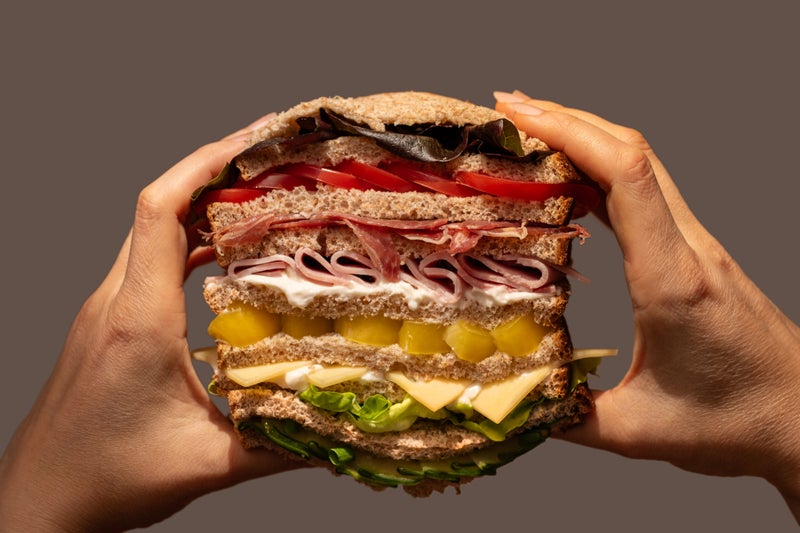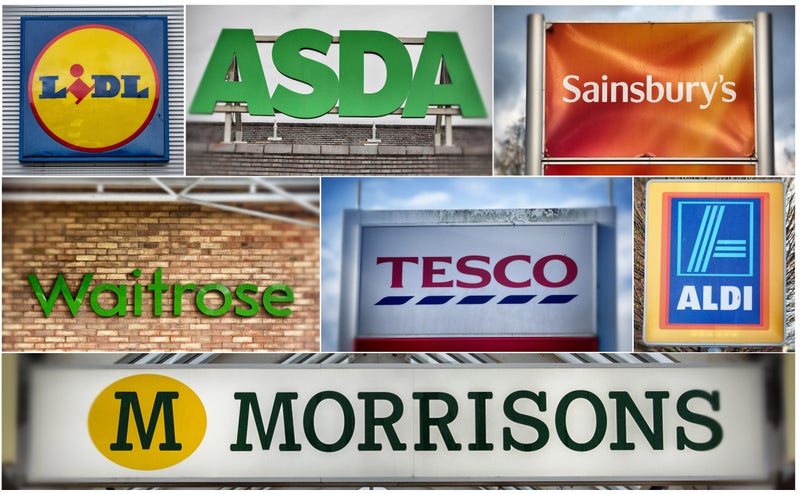As sandwich prices surge across the board alongside a bolstering gourmet sarnie trend, Olivia Petter asks what the future holds for this formerly simple lunchtime staple. A sandwich is defined by its simplicity. Two pieces of bread, a filling that could be as straightforward as two slices of cheese, lettuce, some tomato, and that’s it. Boom: lunch. Easy to make, quick to eat, and convenient to buy, the sandwich has historically dominated the market for hurried workers looking for an on-the-go bite. Its biggest draw, though, has always been the price.
![[The average cost of a sandwich is just over £3]](https://static.independent.co.uk/2025/02/18/14/13/iStock-1746208395.jpeg)
There was a time when sandwiches from a supermarket or from the high street were reasonably priced, with some even under £2. Now, such things are as rare as coffees costing less than a fiver. At Pret a Manger, the humble sandwich has become a luxury item, with some priced as high as £6.25 (the chicken, avocado and basil). According to Bloomberg data, the chicken caesar and bacon baguette has increased by about 32 per cent since 2021, going from £3.99 to £5.25 in some parts of central London.
Meanwhile, M&S recently came under fire for its “posh” egg mayo and watercress sandwich, which was priced at £6, making it more than twice as expensive as the supermarket’s standard egg and cress sarnie despite containing just 51g more filling. Still, it’s a better landscape than at my local Waitrose, where a basic egg mayo and cress sarnie costs £3.10, while a smoked salmon and cream cheese flavour comes to a whopping £5.40.
It does make sense that, much like everything else, sandwiches are getting more expensive. Explanations aren’t hard to find: inflation, Brexit, the strain that Covid-19 put on businesses. “It’s also because of the rising costs of ingredients and labour,” says Jim Winship, director of The British Sandwich & Food to Go Association. “With the latest rise in employment costs, more increases are inevitable.” But Winship stresses that the increases have been in line with other foods. “The average cost of a sandwich is just over £3 – but you will always find outlets, like Pret, that cater for the higher spend market.”.
That may well be the case. But mere price increases are not the only major changes facing the sandwich industry. A global glow-up is afoot. Thanks to the proliferation of experimental food trucks and food influencers, the sandwich has become a gourmet item.
Search “sandwichtok” on TikTok and you’ll quickly see what I mean. Whether or not these sarnies are made at home is irrelevant, the point is just how markedly luxurious they all are: think fillings twice as thick as both slices of bread combined, paired with indulgent ingredients used in unexpected and creative ways, ranging from pistachio pesto paired with buffalo chicken, and lobster combined with premium beef. You can buy sandwiches like this offline, too, most notably at the likes of Sandwich Sandwich, the wildly popular Bristol-born chain that is famed for its decadent fillings ranging from leg of lamb with whipped feta to battered cod and potato rosti.
“People choose us over supermarkets because we offer a truly personal experience,” says Nick Kleiner, founder of Sandwich Sandwich. “We’re still a hands-on, family-run business, and that authenticity is something customers can feel.” They sure can, if for a hefty price: the cheapest sandwich on offer is £6.95. Still, that’s not quite as dear as the infamous £28 sandwich at Harrods, which the luxury retailer launched (to great disdain) in 2023. A wagyu beef butty made with truffle butter and “gold” mustard mayo lodged between two pieces of sourdough, the sandwich was seen by many as a totem of an increasingly ludicrous market.
“No longer just a grab-and-go afterthought, today’s sandwiches are all about quality,” says Jason Geary, master baker at Jason’s Sourdough, which has expanded its offerings beyond loaves to a line of toasties and hot rolls designed to reach a more premium market. “People want artisan bread with real character, fresh ingredients and bold flavour combinations that actually taste like something and that make every bite count. The era of limp, lifeless sandwiches is over.”.
Max Halley, founder of the cult north London hotspot Max’s Sandwich Shop, agrees that the past five years have seen the birth of a major premium market. “I think sandwiches have become genuinely delicious and not just about convenience,” he says. “People are putting truly delicious things they’ve cooked themselves into sandwiches, often in bread they’ve made themselves, rather than just assembling them from bought-in products. I think people have realised that a sandwich can be a meal, and a really delicious one at that.”.
At Max’s, all the sandwiches are priced at £12.95, with costs only changing in line with its suppliers. The most popular filling is ham, egg ‘n’ chips. “Although we do a lasagna sandwich sometimes,” he adds, “which tastes like lasagna rather than having lasagna in it, that outsells [everything else] some weeks it’s on the menu.”.































